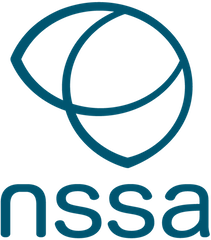Hemlines may have changed, but EEG has remained the same
Hello everyone. With this months blog, I thought I will do a quick write-up on the history and why we use EEG. There is so much more information available if you are interested.
HISTORY
Electrical phenomena of the exposed cerebral hemispheres of rabbits and monkeys was first presented by a physician Richard Caton in 1875, in the British Medical Journal.
Polish physiologist, Adolf Beck, started experimenting on electrical brain activity of animals in 1890. He published an investigation about the spontaneous electrical brain activity seen in rabbits and dogs. Further, Beck observed that these rhythmic oscillations could be altered by light. By placing electrodes directly on the surface of the brain, to test for sensory stimulation, his observed the fluctuation of brain activity. This finding led to the definition of ‘brain waves’.
EEG (Electroencephalograph) was first recorded on humans by the German psychiatrist Hans Berger. It was he who gave the device its name ‘electroencephalogram‘ on July 6, 1924. The EEG was performed on a 17 year old boy, during a neurosurgical operation, which was performed by neurosurgeon Nikolai Guleke.
This breakthrough provided a new neurologic and psychiatric diagnostic tool. The discovery of EEG was a milestone not only for the advancement of neuroscience, but for neurosurgery too. EEGs have become part of everyday neurology practice, especially for patients with seizure.
Through the years following, many prominent physiologists, scientists, physicians and professors have used these early findings to advance the use of EEG and its technology in neurophysiology field.
USES
EEG is one of the main diagnostic tests for epilepsy and is widely used to characterise seizure types. A routine EEG recording typically lasts 20-30 min (plus preparation time). It’s main role is to distinguish epileptic seizures verses psychogenic non-epileptic seizures (PNES). Further, it can help to diagnose episodes of syncope, sub-cortical movement disorders and migraine variants.
EEG is also helpful in diagnosing brain tumours, brain damage due to head injury, stroke, sleep disorders, encephalopathy and encephalitis. Encephalopathy is a type of brain dysfunction that can have a variety of causes, where as encephalitis is due to inflammation of the brain. EEG can also be used as a neuroprognostication tool to diagnose brain death in comatose patients.
LTM (Long Term Video EEG Monitoring) is a form EEG, which involves having patients admitted to hospital and connected to the monitors for several days. This diagnostic tool is performed in most major hospitals, where both the nurses and other personal are trained specifically to care for epileptic patients. Sometimes, the patients are weaned off their anti-epileptic medication to provoke seizures. By recording patient’s brain activity and video for a week, the neurologists and epileptologists are able to diagnose the patients with particular seizure disorders.
At home ambulatory video EEG is also available now. This involves patients coming into the hospital to have the EEG electrodes glued to their head before they are sent home. The EEG is recorded to a data card, which allows them to continue to partake in their day to day routine. However, a disadvantage of this technique is that video is not recorded, making the interpretation of the EEG harder.
EEG is also used in Intra-operative Neurophysiological Monitoring to detect and prevent neurological injury.
As technology continues to advance, new methods of analysing electrical brain activity will be discovered while the method of performing an EEG will likely stay the same. It’s uses in science and technology has no boundaries!
Written by Ashwini Chandra
Sunshine Hospital

